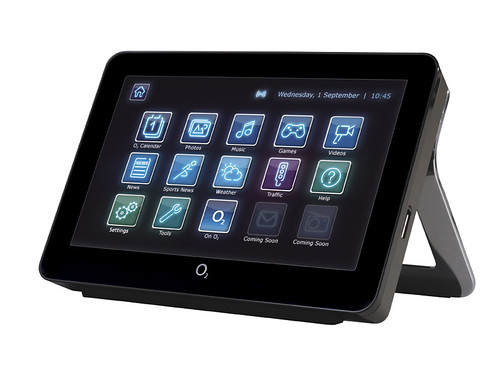EFI has its roots in Intel in the same way as a BIOS has its roots in IBM. Basically, it consists of a set of executables able to run within the simple environment EFI provides. These executables are just little computer programs that can vary extremely widely from talking to a piece of your hardware to providing you with a shell environment in which you can interact with EFI through to booting your operating system. This last function is quite important to us as computer users if we're to understand how EFI is used to start your machine, in this case your Joggler. A BIOS will boot your machine by looking at the master boot record and starting the boot loader that your installed operating system has put there; your operating system is responsible for booting itself. EFI does away with this, moving the responsibility for booting operating systems into the firmware interface itself, you no longer need a boot loader for your operating system. Instead, the boot loader is now just another EFI program that runs within the simple EFI environment I mentioned earlier.
You've been wondering what this FAT partition on your Joggler image is all about? FAT is just another file system like NTFS for Windows or ext for Linux, it's very widely understood so is commonly used these days on USB sticks but not necessarily many other places. If your disk is to be used to boot an operating system then EFI says you need a FAT file system as the first partition of that disk. EFI actually says FAT12 or FAT16 must be used for "removable media" so for us Joggler users with USB sticks or hard disks we should be using FAT16 even though EFI can understand FAT32 as well. You could boot any other disk from your FAT partition but all the simple Joggler cases would just involve booting an operating system somewhere else on the same disk i.e. the second partition.
Fortunately for us, when you start your Joggler its EFI looks both at its internal disk (the one with the O2 interface on it) and removable media (your USB disk). The FAT partition is discovered on your USB disk and by convention the file called startup.nsh is executed. This file is simply a script which can be used to execute any EFI script commands you wish. For Joggler USB booting it just runs a local script on your disk to start your boot loader EFI program.
So for the Joggler we might have something like this in startup.nsh on our disk in order to call the boot.nsh:
fs1:boot2
fs0:bootAnd the following in the file boot.nsh to start the grub EFI boot loader program:
fs1:
grubYou now know what to do in order to boot your Joggler from a USB disk but the final missing piece to the puzzle is the EFI boot loader program itself. In the example above I used grub as the boot loader program. Yes, this is the same grub you're familiar with from booting Linux on BIOS based machines. However, in this example it's an EFI program so you'd be right to be wondering how you go about getting a copy of it. In my example here your FAT partition already has 2 files on it (startup.nsh and boot.nsh) and you'll need another 2 files (grub.efi and grub.cfg) to be able to boot your disk
There are two versions of grub. The old version, grub 1 or grub legacy as it's know known is not the one you want. You're looking for the current version which is (or will become) grub 2. At the time of writing grub 1.98 is the latest version, download the released version. Unfortunately, it doesn't work on the Joggler without applying a patch. So it's with thanks and reference to the guys over at Joggler Hacks I got my Joggler booting with my own grub 2.
To compile an EFI version of grub 2, unpack the source you've downloaded, then apply the Joggler grub 2 patch (using patch -p1), run ./configure --with-platform=efi and make. The compilation should proceed through to completion leaving you just finish off by making the grub EFI program. You can do this with ./grub-mkimage -d . -o grub.efi part_msdos hfsplus fat ext2 normal sh chain boot configfile linux. The file grub.efi will be created and you can copy this to your FAT partition.
The one remaining thing to do is create the grub configuration file. In grub 2 this is called grub.cfg and can be put in the root directory of your FAT partition with the other three files already there. If you've got your root file system on your second partition then the following should be enough for you to boot it:
set timeout=0
menuentry "Linux" {
set root=(hd0,1)
linux /vmlinuz root=/dev/sda2 acpi=force ro idle=halt
initrd /initrd
}
You can find a lot more of my information about the Joggler at my Joggler Index post. I also have a list of Joggler Bookmarks.










